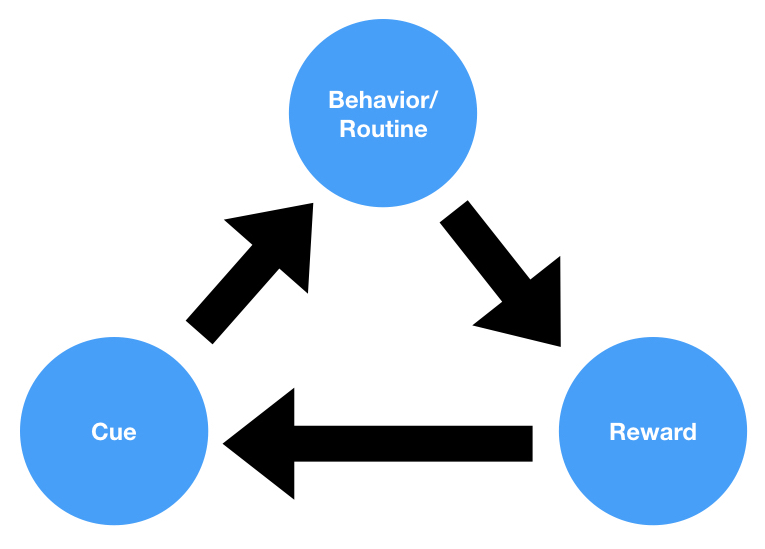What is Behavioral Strategy?
Behavioral strategy is an interdisciplinary field that takes insights and methods from a variety of different disciplines and uses them to help organizations achieve their desired behavioral outcomes. In other words, behavioral strategists are the people who are charged with thinking about the behavior of an organization’s customers and ensuring that a rich understanding of their behavior is incorporated into new projects and plans.
The goal of all behavioral strategy projects is the attainment of Behavior Market Fit.
Behavior Market Fit is the successful match of desired behavior(s) and customers.
When the behavior that is being asked of customers is one that they are excited by, able to do, and find rewarding, success is almost inevitable. This is why it is imperative that every project begins with the creation of a behavioral strategy. The purpose of a behavioral strategy is to clearly understand the target user/customer group and choose the right behavior for them to perform based on this understanding.
The history of business is filled with examples of companies that built their product around the wrong behavior(s). For example, Instagram was originally called Burbn and was built around 3 key behaviors: check-ins, check-in plans, and photo-posts (attached to check-ins). The check-in, however, was a poor behavior choice, resulting in low engagement and low Behavior Market Fit. Checking in was already part of another established app, Foursquare, and it was a behavior that was only popular among a very small subset of tech-obsessed smartphone users.
When the founders of Instagram decided to build the application around photo posting, they found Behavior Market Fit and the app exploded. For their young professionals and creatives market, photo sharing was the perfect behavior. It was exciting, easy, and rewarding. It was thus inevitable that once this behavioral insight occurred, and Behavior Market Fit was found, Product Market Fit would follow, resulting in one of the most habit-forming and successful products of all time.
In order to achieve Behavior Market Fit, behavioral strategists use a rigorous process. While this process is ever-evolving, it can be summarized as follows:
- Step 1: Define the Goal
- Step 2: Define the User
- Step 3: Behavioral Research
- Step 3a: Situational Survey
- Step 3b: Behavioral Audit
- Step 3c: Worldview Analysis
- Step 3d: Problem Examination
- Step 4: Behavior Matching
- Step 5: Behavioral Innovation (conditional step)
- Step 6: Product Design and Development
We’ll cover each briefly, to give you a sense of what’s involved at each step in the Behavioral Strategy process.
Step 1: Define the Goal (Define the Problem and/or Goal)
The first step of any behavioral strategy project should always be the creation of a clear and measurable goal.
Some examples:
- Increase repeat customer sales.
- Increase grocery sales.
- Get in-store customers to become omnichannel customers.
- Increase customer satisfaction.
- Build a deeper relationship with 65+ customers (or Gen Z customers).
- Reduce customer support costs.
Once the goal of the project is clearly defined and agreed upon, we can move to the next step.
Step 2: Define the User
Who is the user/customer you’re trying to influence?
During this stage of the process, behavioral strategists work with the team to make sure that a clear user group is defined.
Some goals are created with a user in mind (for example, “build a deeper relationship with 65+ or Gen Z customers”). However, most goals tend to leave ambiguity with the user group.
This is a huge problem.
A behavioral strategy that works for one group of users may not work for another. We humans are incredibly complex and differ in profound ways. We have different likes, dislikes, talents, backgrounds, interests, etc. What will be an interesting and fun behavior for one group of people might not necessary be interesting and fun for another. What’s easy for one person may be very hard for another. That’s why gaining clarity on the user group (or groups) you’re building for is critical. The behavioral strategy depends on a deep understanding of the specific group(s) one is building for.
While it is sometimes possible to build for “everyone”, it is almost always a good idea to choose a specific user group that one should begin with.
During this phase of the behavioral strategy process, you should take the goal that you defined in the previous stage and list out different user/customer groups that can help you achieve it. Your goal should also help you rank-order and filter your potential user/customer groups.
For example, if your goal is to increase your number of omnichannel customers, your target user/customer group will probably not consist of the very young or the very old. The very young will not have smartphones, computers, or money of their own, and the very old will likely not own a smartphone, computer, or have the level of tech savvy needed to become habitual omnichannel users. In this way, the defined goal will help shape the user/customer group you’re building for.
As a team, you should try to come up with as many different potential user/customer groups as possible.
You can be as broad or as narrow as you’d like. However, do keep in mind that for many goals your user group needs to be sizable in order to drive a large enough impact.
It is not uncommon for user/customer group ideation and exploration to result in a modified goal. That is no problem at all. You can move back and forth between steps 1 and 2 until you feel good about the list of user/customers groups you’ve created for your clearly defined project goal.
Once you have a list of potential user/customer groups, you should spend some time evaluating each with the following rubric:
- Is this user group large enough to drive the desired impact? (scale 1-5)
- Do we already have a relationship with this user group? Do we already have the ability to reach out to a substantial number of people in this user group? (1-5)
Once you’ve scored all the user/customer groups, you can then rank-order them. There will most likely be 1 to 3 groups that stand out and form a top tier. Have a discussion as a group and decide which of the top tier user/customer groups you’d like to target for your project.
Agree on a name for each user group you choose, and write out a detailed description for each one. All of this should be done on a single page.
Your 1-pagers should contain the following:
- User group name
- User group characteristics
- Age
- Gender/sex
- Location
- Income
- Language
- Culture
- Defining Motivation
- Beyond age, gender, location, language, and income, what are the defining characteristics or interests of this group? Perhaps they are devoted gamers? Obsessive book readers? This defining interest can be called a Defining Motivation.
- Every target user group usually has at least one Defining Motivation that separates it from the general population. Write out the potential Defining Motivations of your user group(s) on this 1-pager.
Once you have a clearly defined user group(s) for your project goal, it’s time to begin the Behavioral Research phase.
Step 3: Behavioral Research
The most time consuming portion of any behavioral strategy project is the Behavioral Research phase. During this phase, the goal is to gain a comprehensive understanding of the person, group, or groups we’re trying to influence.
For each project, the following research must be done for each user group:
- Situational Survey
- Behavioral Audit
- Worldview Analysis
- Problem Examination
Situational Survey
A Situational Survey is a comprehensive look at the environment in which the typical user resides.
The Situational Survey should answer the following:
- Where does the typical user live (city, country, suburb)?
- Who do they live with?
- What type of residence are they in?
- What is their family situation? Are they married? Single?
- What is their friend network like?
- Who do they spend most of their time with?
- What do they do for work?
- What are their work hours?
- How much free time do they have?
- What is their educational background?
- What is their financial situation?
The purpose of a Situational Survey is to understand the contextual constraints on the typical group-member’s behaviors. For example, certain types of behaviors are going to be a lot harder to do for someone who lives in a city vs a suburb. If someone lives alone, certain types of activities will be a lot easier. If someone has a family, certain activities will be much more difficult. Understanding the context gives us a good sense of the types of behaviors that are realistically possible for the user group we’re building for.
Behavioral Audit
The goal of a Behavioral Audit is to understand the behavioral repertoire of the the user group we’re focused on. We want to create a comprehensive list of all the behaviors that the people in this group do. In general, these behaviors should be categorized in two different ways: by frequency and by domain.
- Frequency
- Habits
- Less-frequent and one-off behaviors
- Domain
- Purchase/consumer behaviors
- Health behaviors
- Exercise behaviors
- Social behaviors
- Dating/courtship behaviors
- Work behaviors
- Leisure/hobby behaviors
- Media behaviors (TV, digital media consumption, movies, etc.)
- Educational behaviors
- Travel behaviors
- Financial behaviors (investing, saving, etc.)
- Technological behaviors (computer, smartphone, etc.)
- Reading behaviors
- Sleep/wind-down behaviors
- Waking/morning behaviors
In order to complete this portion of the Behavioral Research phase, it is also important to create a Behavior Calendar for the typical member of each user/customer group.
A Behavior Calendar is a 1-week, hour-by-hour view of what typical user/customer group member does. The easiest way to create this is by using a program like Outlook or Google Calendar. You can craft a comprehensive calendar view of what a typical user/customer is doing at any given time on any given day.
This gives life to the behavior list you created earlier, and allows you to really see and understand what a typical day or week in a typical user/customer’s life is like.
Worldview Analysis
The final portion of the Behavioral Research phase is the Worldview Analysis. In a Worldview Analysis, the goal is to do as much as possible to empathize with the user group(s) in question, and to try and understand how they view the world. We want to understand their aspirations, fears, beliefs, knowledge, and so on.
If we do a proper Worldview Analysis, we should be able to instantly know whether or not a given idea or behavior will seem “weird” or “strange” to a member of the user group we’re building for. We will also know whether or not a given idea or behavior will seem compelling. During the next step of the behavioral strategy process, we will need to use our research and empathy to determine which behaviors are best suited for our goal and target user/customer group(s).
Problem Examination
Problem Examination is focused on understanding the problems and pain points for the user group. This work is based on the results of the three previous Behavioral Research steps. After spending time understanding the world and mind of the user group, we should have a clear understanding of the major and minor problems the group faces. A successful behavioral strategy is a win-win, solving a problem for both the user group and the company. This is why it’s so important for us to understand the problems the user group faces. The behavior we choose in the Behavior Matching step should not only fit into the situation, behavioral repertoire, and worldview of the user group, but it should also solve a legitimate problem for the user group. During this exercise, our goal is to create a comprehensive list of all the problems the user group faces, and to categorize and score them according to their severity. The end result is an in-depth look at all the issues facing our user group, both large and small, across all areas of lfie.
Step 4: Behavior Matching
The next phase of the behavioral strategy process is to do what we call Behavior Matching.
This is when we come up with different behaviors that the defined user group can do in order to help us achieve our project goal.
The Behavior Matching phase has three steps:
- Behavior Ideation
- Behavior Ranking
- Behavior Selection
Behavior Ideation
In the Behavior Ideation step, the goal is to come up with as many behaviors that can contribute to the goal as possible.
Every goal/outcome can be achieved hundreds of different ways. The purpose of this step is to list out all the hundreds of different things the target user group can do, so that we can then evaluate and then rank order them.
Your team should spend as much time as needed to come up with a comprehensive list of all the different things the target user/customer can do to help you achieve your goal.
Goal: Increase spend per customer
Company: Big-box retailer
For a goal like this, we are presented with hundreds of different behaviors. All we need to do is look at the Behavioral Analysis and Behavior Calendar we created in the previous step, and write out all of the purchase-related behaviors.
Here’s an abbreviated example of what we would create just based on the Behavior Calendar entries for Monday:
- Purchase coffee
- Purchase toothpaste
- Purchase toothbrush
- Purchase floss
- Purchase computer
- Purchase computer supplies
- Purchase car supplies
- Purchase gasoline
- Purchase takeout/food delivery
- Purchase exercise equipment
- Purchase smartphone
- Purchase groceries (organic)
- Purchase cooking equipment
- Purchase television
- Purchase shampoo and soap
As you can see here, we’ve merely listed out all of the different purchase behaviors related to this individual’s prototypical Monday schedule. For the goal of “increase spend”, these work perfectly. To complete this list, we would go through the entire Behavior Calendar, from Monday through Sunday, and spend some more time going through the Behavior Audit and brainstorming. At the end of this ideation process, we’ll have a list of a couple hundred behaviors that this person does, or can do, that are related to purchase/spend.
Once we have this list, it’s time to rank-order it.
Behavior Ranking
Behavior Ranking is the process of scoring and rank-ordering each goal-related behavior. This step helps us narrow down the hundreds of possible behaviors into a final set of 5-10 that we can decide between.
We will score the behaviors across the following criteria:
- Compelling: Is the behavior exciting to the target user? (scale 1-5)
- Use the Worldview Analysis to help you make this determination
- Reasonable: Is the behavior reasonable to the target user? If it’s strange, then the score should be low. (scale 1-5)
- Use the Worldview Analysis to help you determine this
- Socially Acceptable: Is the behavior acceptable to the target user’s social group? (scale 1-5)
- Use the Worldview Analysis and any other user/customer group information you’ve collected to help you determine this
- Physically simple: Is the behavior easy (physically) for the target user? (scale 1-5)
- Use the Situational Survey, Behavior Audit, and user/customer group information from Step 2
- Cognitively simple: Is the behavior easy (cognitively) for the target user? (scale 1-5)
- Use the Behavior Audit, Worldview Analysis and user/customer group information from Step 2
- Expensive: Is the too costly for the target user? (scale 1-5) (reverse scored)
- Use the Situational Survey
- Rewarding: Is the behavior pleasurable for the target user? (scale 1-5)
- Use the Behavior Audit and Worldview Analysis
- Useful: Is the behavior useful for the target user? Does it help them solve a real problem? (scale 1-5)
- Use the Problem Examination list
- Impactful: How large is the impact of this behavior on the project goal? (scale 1-5)
You can weight the different factors to your liking depending on the project. In general, I recommend giving “rewarding”, “compelling”, “useful”, and “impactful” double the weight.
Score each of the behaviors across these 7 criteria and rank order them according to their score.
Behavior Selection
In the Behavior Selection phase, we look at the top behaviors from the Behavior Ranking step and decide which of them we would like to choose.
Look at the top 5-10 behaviors and have some vigorous discussions with the rest of your team.
It’s quite likely that there are 1 or 2 standout behaviors and your decision will be easy.
In other circumstances, you may find that there are 10 or 20 behaviors tied at the top. In that case, see if there are any commonalities and if there are certain behaviors that just seem to pop out. Coming up with a lot of behaviors can sometimes result in redundant behaviors, or behaviors that are actually sub-behaviors of other behaviors. In a perfect world, your behavior list would be Mutually Exclusive and Collectively Exhaustive (MECE). But in practice this isn’t always the case (especially for inexperienced teams doing this for the first time). If you have a large number of behaviors tied with high scores, it’s always a good idea to zoom out and see if you’re really just dealing with the same behavior or flavor of behavior with different labels.
Spend some time figuring out which behavior, or which small set of behaviors, you’d like to choose for this project. If none of them feel like a good, compelling fit, then you might need to go to the next, optional step.
Step 5: Behavioral Innovation
Behavioral Innovation is an optional step that you can do if none of the behaviors from the Behavior Matching phase are satisfactory.
In some circumstances, you may find that your top behaviors are weak or not compelling. In that case, you may need to create a new behavior.
Here’s an example: flossing.
Flossing was a new behavior that was invented and propagated in order to solve the gum and tooth health problem. Before that, people used toothpicks, cloths, and frayed sticks as teeth cleaning devices. However, all of these methods were suboptimal gum cleaning methods. At some point, someone had the idea to take hair and thread it in between the teeth. This is pure Behavioral Innovation.
It was a new behavior that was created to solve a common problem.
You may find that your project requires a new behavior, as well.
In order for a behavior to get a high score, it needs to be compelling, reasonable, socially acceptable, physically simple, cognitively simple, reasonably priced, rewarding, useful, and impactful. It’s not always possible to find a pre-existing behavior that is all of these things.
In those cases, we need to invent a new behavior—one that our new product or service can facilitate.
Behavioral Innovation is a huge topic that we will cover in future articles and reports.
Step 6: Product or Service Development
At this point, you have either chosen a behavior (or small set of behaviors) or invented a behavior.
Now it’s time to build a new product or service around this behavior.
This is where Behavioral Strategy meets up with Product Development and Design.
The goal is to now create a product or service that allows users/customers to perform this behavior in an easy and delightful way, so that they can solve a legitimate problem in their lives. The Product Development and Design group can take the chosen behavior and brainstorm all the different forms the new product or service can take to provide the target users/customers with the best user experience.
The behavioral strategy work we did up front, though, will determine the shape and direction of the product or service.
If, after a first product is built and tested, we do not see the desired impact on the project goal, we may decide that it’s necessary to build a new product or service around another top behavior from our list. However, this should only be done after the initial product or service has been thoroughly debugged and tested for usability and user experience errors. If, after enough usability and user experience optimization, the product or service is not meeting the project goals, then it’s time to go back to Step 4 and choose another behavior. We can then go through Steps 4-6 again.
Schedule a free Behavioral Strategy Session
Why Isn’t This A Standard Part Of The Strategy Phase Today?
This way of looking at products and services as ways for people to do behaviors they need to do (just more easily and enjoyably), is fairly new and unique to the business and technology worlds.
Many companies are now just learning about customer development and lean startup methodologies, and are just starting to focus on things like Product Market Fit. Thus, it’s not surprising that Behavioral Strategy and Behavior Market Fit would be novel concepts.
Behavior Market Fit is something that should be analyzed and determined before Product Market Fit is attempted. By focusing on Behavior Market Fit first, you can ensure that any new strategic initiative or product has the greatest chance of being adopted by the target market—since it accords with human psychology and behavioral theory.
Is Behavioral Strategy Applicable To All Industries?
It’s applicable to all industries that have a human end user. It’s also applicable to all internal change management and organizational development projects.
What About The Health Care?
Yes, Behavioral Strategy is very helpful to health care organizations and businesses.
Health care has paid attention to the behavioral sciences for some time (especially behavioral health care). This is because many health issues are behavioral issues (eating disorders, addiction, etc.). And many medical treatments succeed or fail based on behavioral compliance (taking medication, etc.).
However, while the health world has long focused on behavior change, it hasn’t had the greatest track record. It is my belief that one of the reasons is because behavior change and compliance are often seen as afterthoughts, rather than as the starting point of strategic planning and treatment creation.
Health care businesses come up with medical solutions, and then try to get patients to adopt those solutions through behavioral nudges, interventions, etc.
What if, instead, health care organizations started with the target market and came up with high compliance actions first, and then worked to create solutions that leveraged or fit within those high compliance actions. This is the approach of starting with human psychology and behavior, and then building a product or service.
For example, there is a large degree of vaccine hesitancy. Part of this is surely due to the fact that needles are scary and painful. No one likes getting stabbed with a needle. Because of the numerous childhood vaccines people need to get, a large portion of the adult population grows into adulthood with unpleasant memories about shots and needles. In a certain sense, many adults are moderately traumatized by these unpleasant pediatric experiences. A Behavioral Strategy approach to vaccines would start by analyzing the behavioral and psychological issues present in the general population related to vaccination. A comprehensive analysis would likely find that the the standard form factor of vaccines is a significant driver of vaccination hesitancy. It would also likely find that the name “vaccine” has been so thoroughly maligned in some circles that the only way to get those individuals to partake in the activity would be by coming up with a new label. Thus, a Behavioral Strategy might find that a new form factor + new label should be the core of new vaccine creation initiatives. As part of this project, a team would explore which new vaccine form factors would be possible (nasal sprays, transdermal patches, etc.) for the diseases being targeted, and would do work to come up with new treatment names that would be more acceptable to the general population (immune enhancement, pathogen protection, etc.).
Since the strategy is determining which form factors should be explored, it should occur before any product research or development is begun. Any treatment built on top of a good behavior-focused strategy is much more likely to succeed and not have any public relations or psychological blowback (as we’ve seen with vaccines in recent years). A vaccine approach built around psychologically acceptable form factors would have the best chance of optimizing patient outcomes. And a strategy that chooses a new name with no preconceptions and baggage would allow for more effective and informative public health communications. Unfortunately, the current controversies and political nature of the issue prevent people from analyzing things clearly, since there are so many cognitive biases at play.
This is just one example of how health care organizations and even life science clients can benefit mightily from taking a Behavioral Strategy approach to their products and services.
As you can see, a focus on human behavior isn’t just for behavioral health or a behavioral health related field. It can and should be a focus for health care treatment development in general.
Behavioral Strategy Should Be The Focus Of Strategic Management
Strategic Management means many things to many people. Just look at a randomly selected issue of The Strategic Management Journal and you’ll see papers dealing with a wide range of topics:
- “Corporate directors as heterogeneous network pipes: How director political ideology affects the interorganizational diffusion of governance practices“
- “Health insurance benefits as a labor market friction: Evidence from a quasi-experiment“
- “Learning by doing and corporate diversification“
- “How much does the firm’s alliance network matter?“
Strategic management and strategic management theory have typically focused on things like competitive advantage, portfolio theory, and the value chain, and have undervalued behavioral science and behavioral principles.
In fact, if you look at the most popular strategic management analyses, you will not find any mention of human behavior or human psychology.
However, a business is only as good as its ability to change customer behavior and get customers to form robust routines or habits around their products and services.
This is why human behavior and psychology should form the core of every business strategy.
The traditional purpose of Strategic Management is usually stated as “building a competitive advantage”. As Anthony E. Henry, author of Understanding Strategic Management, defines it: “Competitive advantage is the configuration of an organization’s activities which enable it to meet consumer needs better than its rivals.”
The only way to meet consumer needs is by creating something that they will actually use. And to create something they will actually use, it’s necessary to incorporate academic research from the behavioral sciences, including cognitive and social psychology, evolutionary psychology, educational and learning psychology, habit formation psychology, persuasive technology, etc. These fields, when combined, can help organizations come up with robust behavioral strategies and develop a behavioral theory that can then guide their product, business, and functional/operational strategies.
While some companies already have established behavioral programs, they usually aren’t involved in strategic planning, and instead act as user research and nudge groups that are brought in to help after new products or services have been launched.
In the coming years, it is likely that businesses will realize that an understanding of behavior is a must for building a sustainable competitive advantage. As industry trends related to smartphone and Internet usage continue to unfold, it will become obvious that the companies that are able to understand their target market and build an experience that’s engaging, exciting, simple, and useful will be those who win. Behavioral Strategy, coupled with world class user experience research and design, is the only sustainable way to get there.
Interested in working with a Behavioral Strategist?





